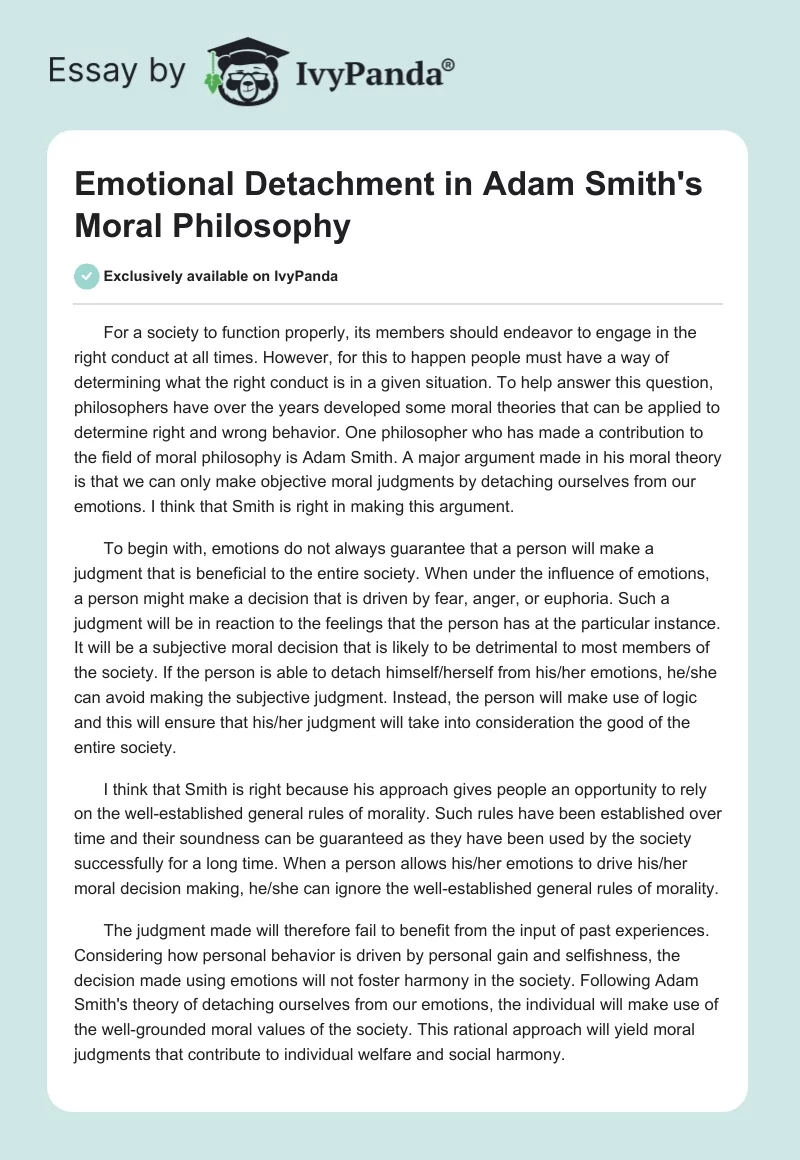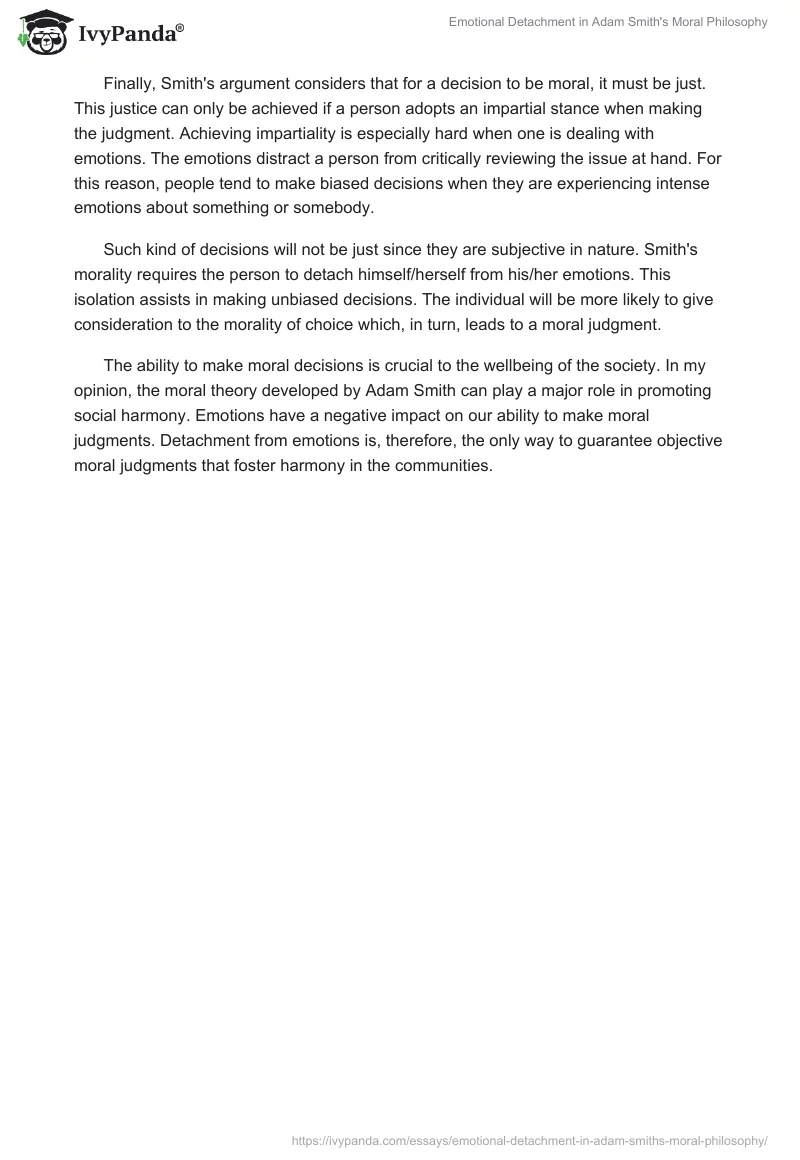For a society to function properly, its members should endeavor to engage in the right conduct at all times. However, for this to happen people must have a way of determining what the right conduct is in a given situation. To help answer this question, philosophers have over the years developed some moral theories that can be applied to determine right and wrong behavior. One philosopher who has made a contribution to the field of moral philosophy is Adam Smith. A major argument made in his moral theory is that we can only make objective moral judgments by detaching ourselves from our emotions. I think that Smith is right in making this argument.
To begin with, emotions do not always guarantee that a person will make a judgment that is beneficial to the entire society. When under the influence of emotions, a person might make a decision that is driven by fear, anger, or euphoria. Such a judgment will be in reaction to the feelings that the person has at the particular instance. It will be a subjective moral decision that is likely to be detrimental to most members of the society. If the person is able to detach himself/herself from his/her emotions, he/she can avoid making the subjective judgment. Instead, the person will make use of logic and this will ensure that his/her judgment will take into consideration the good of the entire society.
I think that Smith is right because his approach gives people an opportunity to rely on the well-established general rules of morality. Such rules have been established over time and their soundness can be guaranteed as they have been used by the society successfully for a long time. When a person allows his/her emotions to drive his/her moral decision making, he/she can ignore the well-established general rules of morality.
The judgment made will therefore fail to benefit from the input of past experiences. Considering how personal behavior is driven by personal gain and selfishness, the decision made using emotions will not foster harmony in the society. Following Adam Smith’s theory of detaching ourselves from our emotions, the individual will make use of the well-grounded moral values of the society. This rational approach will yield moral judgments that contribute to individual welfare and social harmony.
Finally, Smith’s argument considers that for a decision to be moral, it must be just. This justice can only be achieved if a person adopts an impartial stance when making the judgment. Achieving impartiality is especially hard when one is dealing with emotions. The emotions distract a person from critically reviewing the issue at hand. For this reason, people tend to make biased decisions when they are experiencing intense emotions about something or somebody.
Such kind of decisions will not be just since they are subjective in nature. Smith’s morality requires the person to detach himself/herself from his/her emotions. This isolation assists in making unbiased decisions. The individual will be more likely to give consideration to the morality of choice which, in turn, leads to a moral judgment.
The ability to make moral decisions is crucial to the wellbeing of the society. In my opinion, the moral theory developed by Adam Smith can play a major role in promoting social harmony. Emotions have a negative impact on our ability to make moral judgments. Detachment from emotions is, therefore, the only way to guarantee objective moral judgments that foster harmony in the communities.


